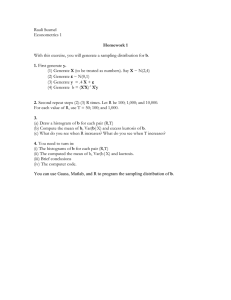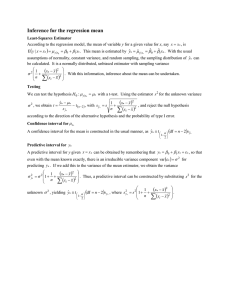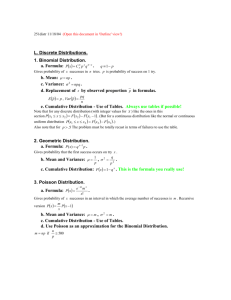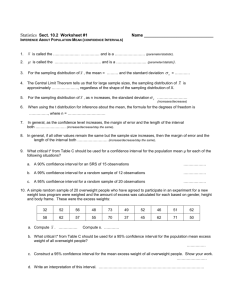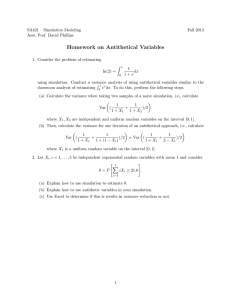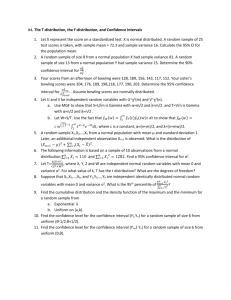Some Popular Probability Distributions for Discrete Random Variables
advertisement
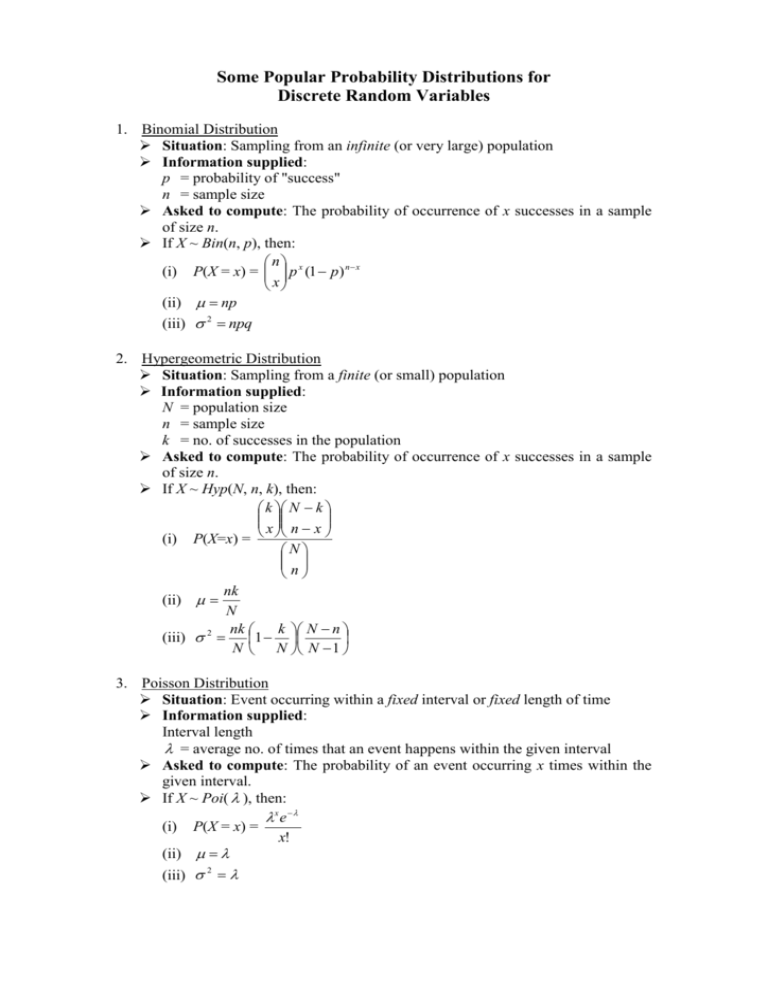
Some Popular Probability Distributions for Discrete Random Variables 1. Binomial Distribution Situation: Sampling from an infinite (or very large) population Information supplied: p = probability of "success" n = sample size Asked to compute: The probability of occurrence of x successes in a sample of size n. If X ~ Bin(n, p), then: n (i) P(X = x) = p x (1 p) n x x (ii) np (iii) 2 npq 2. Hypergeometric Distribution Situation: Sampling from a finite (or small) population Information supplied: N = population size n = sample size k = no. of successes in the population Asked to compute: The probability of occurrence of x successes in a sample of size n. If X ~ Hyp(N, n, k), then: k N k x n x (i) P(X=x) = N n nk (ii) N nk k N n (iii) 2 1 N N N 1 3. Poisson Distribution Situation: Event occurring within a fixed interval or fixed length of time Information supplied: Interval length = average no. of times that an event happens within the given interval Asked to compute: The probability of an event occurring x times within the given interval. If X ~ Poi( ), then: x e (i) P(X = x) = x! (ii) (iii) 2 Some Popular Probability Distributions for Continuous Random Variables 1. Exponential Distribution 1 x e , x0 f ( x) otherwise 0, 1 If X ~ exp , then (i) E(X) = , and (ii) var(X) = 2 2. Normal Distribution 1 x 2 , x 2 2 If X ~ N , 2 , then: (i) E(X) = , and (ii) var(X) = 2 X If X ~ N , 2 , then the random variable Z has a standard normal f ( x) e 2 2 distribution, i.e. Z ~ N (0,1) . 3. Chi-squared Distribution used in the inference of variance for a sample of size n, we apply the Chi-squared 2 n 1 degrees of freedom. distribution with 4. T Distribution approximates the normal distribution when the sample size is small (n < 30). used in the inference of mean from a small sample for a sample of size n, we apply the T distribution with n 1 degrees of freedom. Sampling Theory Suppose that a sample of size n is drawn from a population P with E(P) = and var(P) = 2 . Let the mean and variance of the sample be X n and S n2 respectively. (i) If the sample size is small (n < 30), and if P ~ N , 2 , then (ia) when 2 is known, then the sample mean X n has approximately a normal 2 2 . distribution with mean and variance , i.e. X n ~ N , n n (ib) when 2 is unknown (or not given), then the transformed sample mean, Xn T , follows a t distribution with n 1 degrees of freedom. sn n (ii) If the sample size is sufficiently large (n 30), then regardless of P's 2 . Use s n2 in place of 2 if 2 is unknown. distribution, X n ~ N , n


